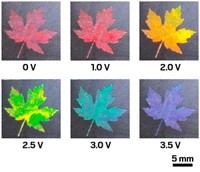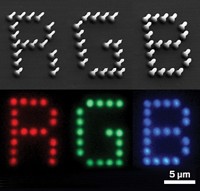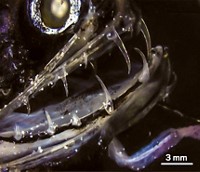Advertisement
Grab your lab coat. Let's get started
Welcome!
Welcome!
Create an account below to get 6 C&EN articles per month, receive newsletters and more - all free.
It seems this is your first time logging in online. Please enter the following information to continue.
As an ACS member you automatically get access to this site. All we need is few more details to create your reading experience.
Not you? Sign in with a different account.
Not you? Sign in with a different account.
ERROR 1
ERROR 1
ERROR 2
ERROR 2
ERROR 2
ERROR 2
ERROR 2
Password and Confirm password must match.
If you have an ACS member number, please enter it here so we can link this account to your membership. (optional)
ERROR 2
ACS values your privacy. By submitting your information, you are gaining access to C&EN and subscribing to our weekly newsletter. We use the information you provide to make your reading experience better, and we will never sell your data to third party members.
Biological Chemistry
Reflective guanine crystals lend sight to scallops
Tightly tiled square plates create a mirror to concentrate light on the mollusk’s retina
by Emma Hiolski
December 4, 2017
| A version of this story appeared in
Volume 95, Issue 48
What do scallop eyes have in common with iridescent crustaceans and shimmery fish scales? Guanine crystals. The shape of the reflective crystals, it turns out, is an important part of natural mirrors found within scallop eyes. Scallops use mirrors instead of lenses to concentrate light on their retinas. Scientists had suspected these mirrors were composed of alternating layers of guanine and cellular cytoplasm, a strategy used by crustaceans and fish to create glimmering surfaces. However, the delicacy of scallop eye mirrors made elucidating the nanoscale structure challenging. Researchers led by Lia Addadi of Weizmann Institute of Science decided to take a closer look by using cryogenic scanning electron microscopy, which rapidly freezes water in tissue samples to create near-lifelike visualization conditions. “The first time we saw the eye mirror in the electron microscope, our mouths fell open,” says colead author Benjamin A. Palmer. The images revealed a tightly organized mirror structure, with 20 to 30 layers of tiled square plates made of β-guanine, with each layer perfectly aligning the plates in a vertical stack (Science 2017, DOI: 10.1126/science.aam9506). The mirror best reflects blue-green light, the same wavelengths that reach the scallops’ seafloor habitat.







Join the conversation
Contact the reporter
Submit a Letter to the Editor for publication
Engage with us on Twitter